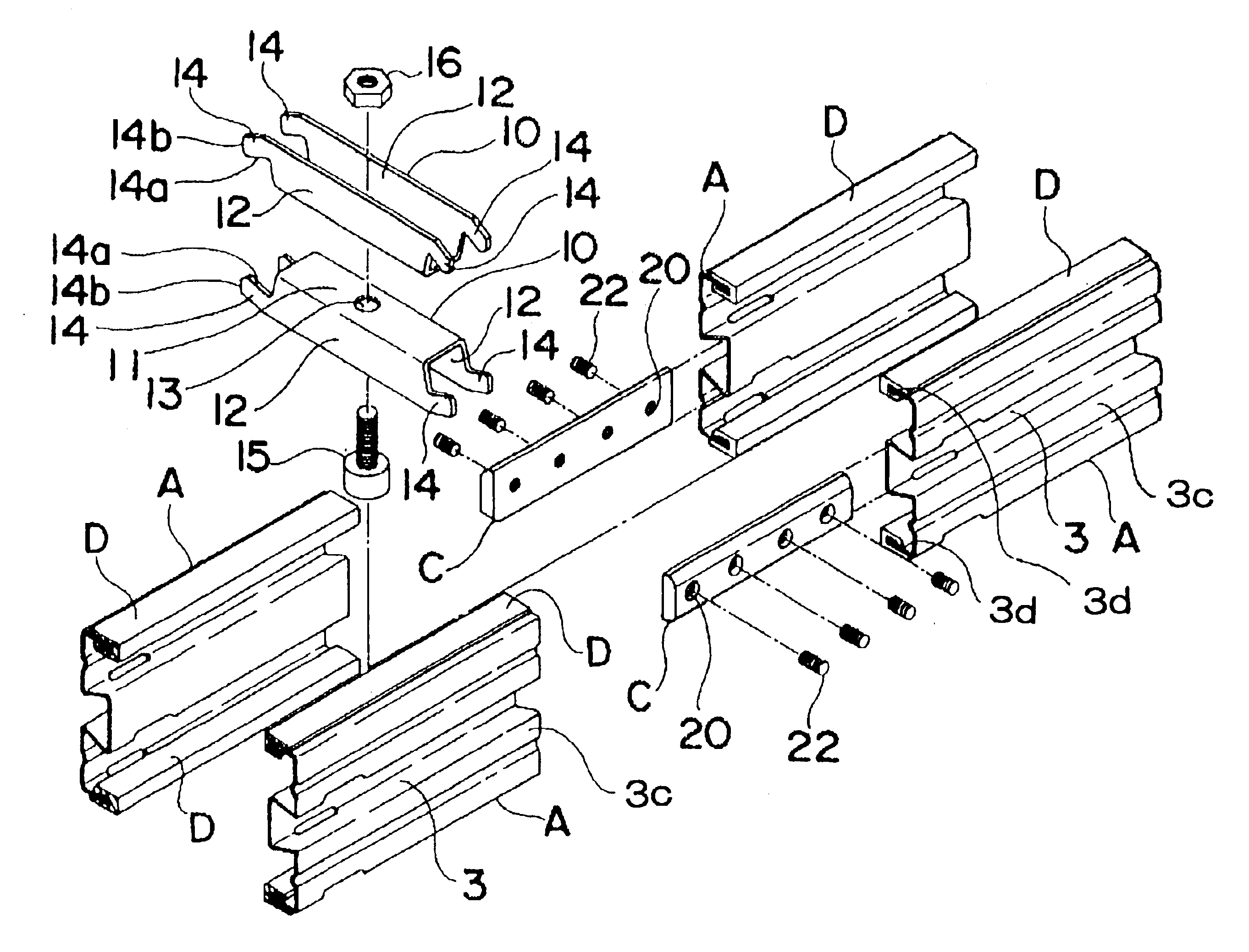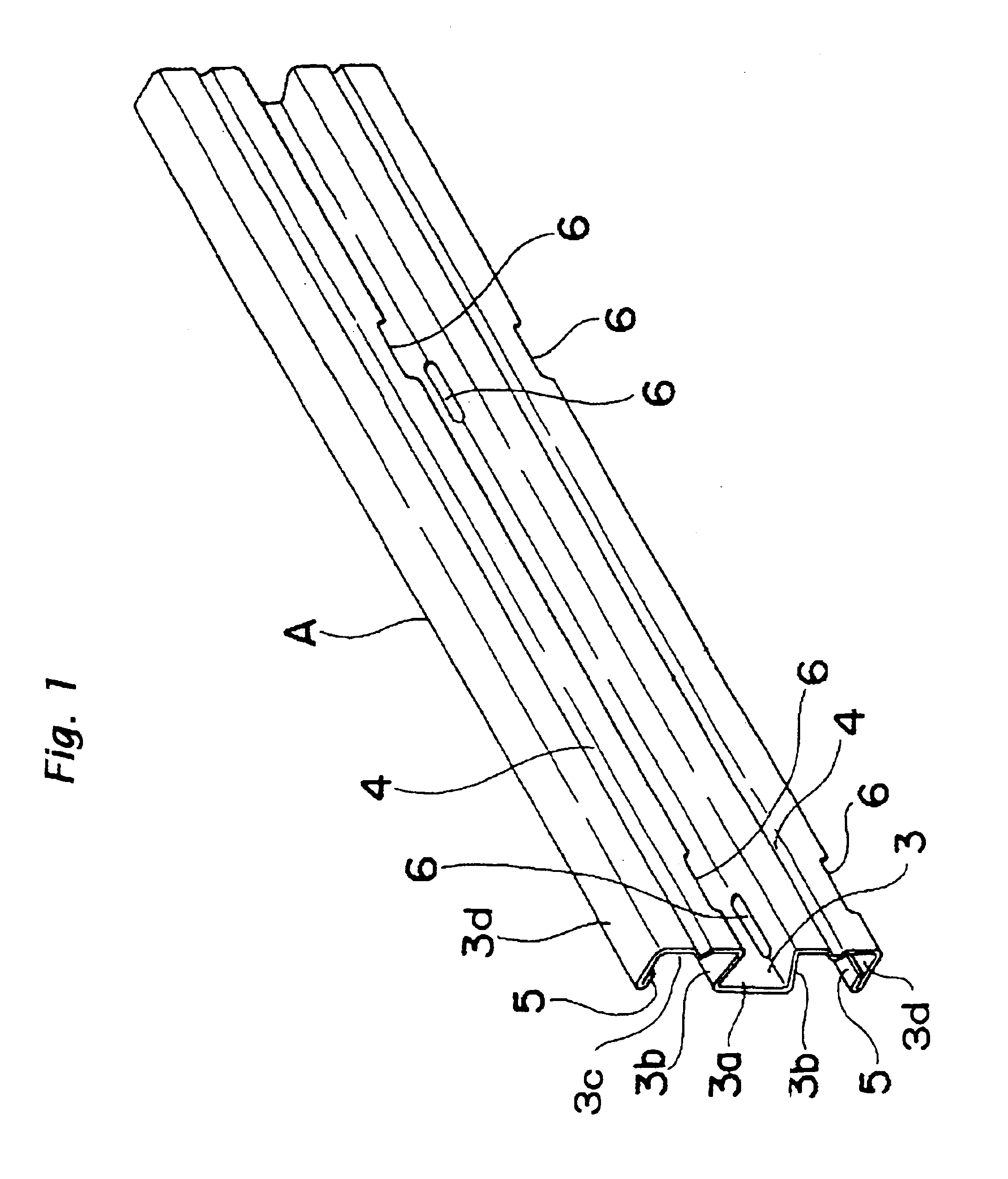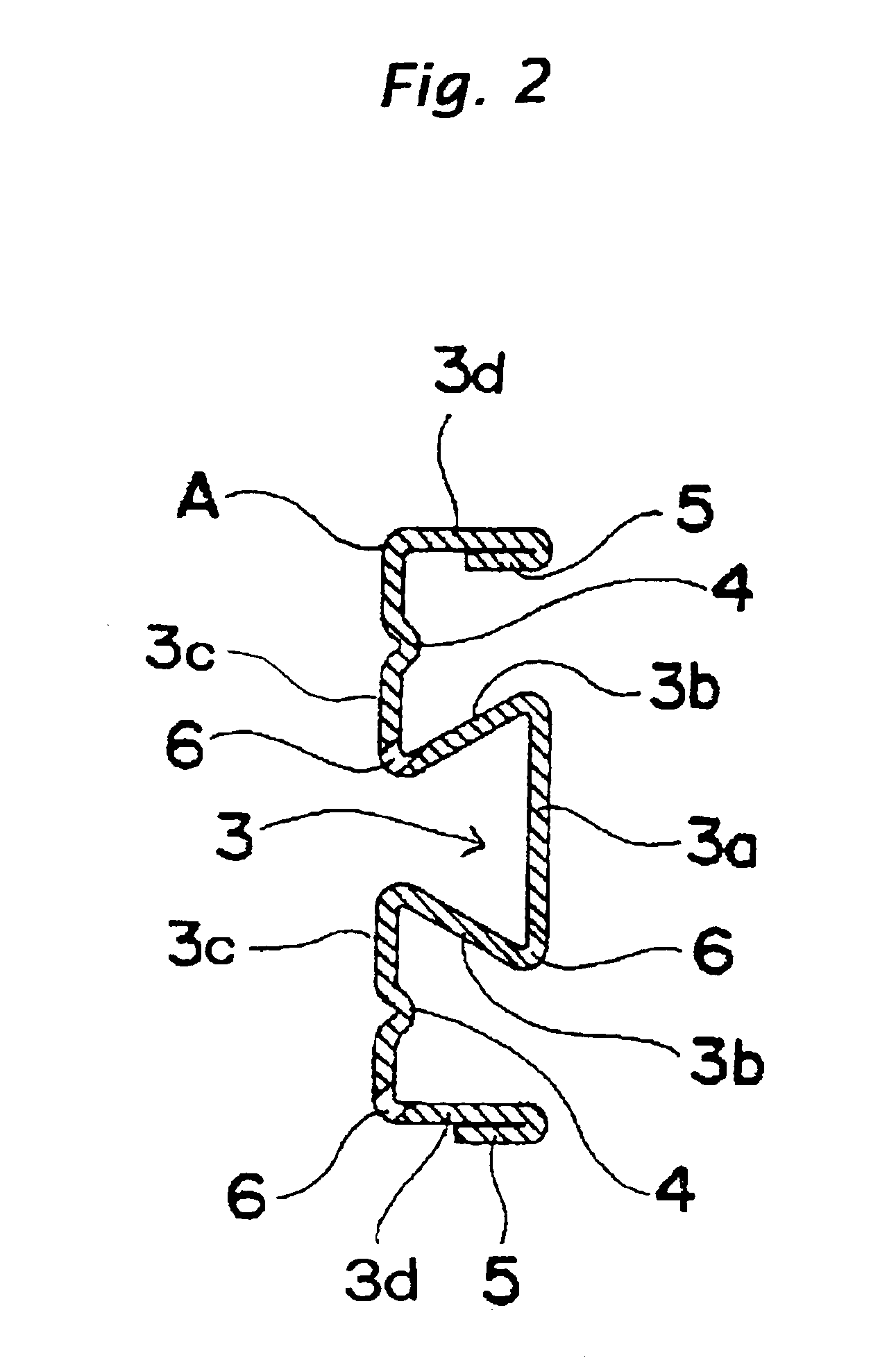Frame member with traveling rail used in conveyor system and traveling frame assembly using the same
a frame and conveyor technology, applied in the direction of rope railways, railways, ways, etc., can solve the problems of difficult to reduce the weight of the frame member and the manufacturing cost, the structure is relatively simple, and the shape is not advantageous, etc., to achieve high work precision, high rigidity, and easy handling
- Summary
- Abstract
- Description
- Claims
- Application Information
AI Technical Summary
Benefits of technology
Problems solved by technology
Method used
Image
Examples
Embodiment Construction
Through the accompanying drawings, the frame member according to the present invention is indicated with a reference A. The frame member A is used as a traveling frame assembly, guide rail, receiving rail or the like used in a conveyor system. It is formed from an elongated rectangular steel plate to have desired dimensions and shape for any intended purpose, for example.
As shown, the frame member A consists of a rear section 3a extending longitudinally of the frame member A and having a predetermined width and a length larger than the width, a pair of inclined sections 3b contiguous to lateral ends of the rear section 3a and extending in converging directions away from the rear section 3a, the rear section 3a and pair of inclined sections 3b defining together a structure having a generally C-like vertical cross section, a pair of front sections 3c contiguous to lateral ends of the inclined sections 3b and extending in directions generally parallel to the rear section 3a, and a pair...
PUM
 Login to View More
Login to View More Abstract
Description
Claims
Application Information
 Login to View More
Login to View More - R&D
- Intellectual Property
- Life Sciences
- Materials
- Tech Scout
- Unparalleled Data Quality
- Higher Quality Content
- 60% Fewer Hallucinations
Browse by: Latest US Patents, China's latest patents, Technical Efficacy Thesaurus, Application Domain, Technology Topic, Popular Technical Reports.
© 2025 PatSnap. All rights reserved.Legal|Privacy policy|Modern Slavery Act Transparency Statement|Sitemap|About US| Contact US: help@patsnap.com



